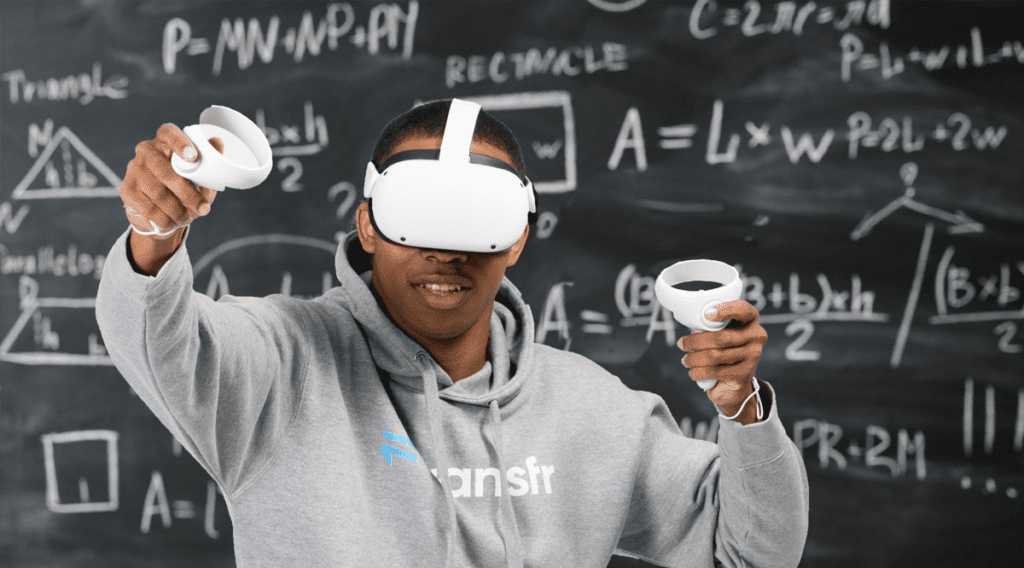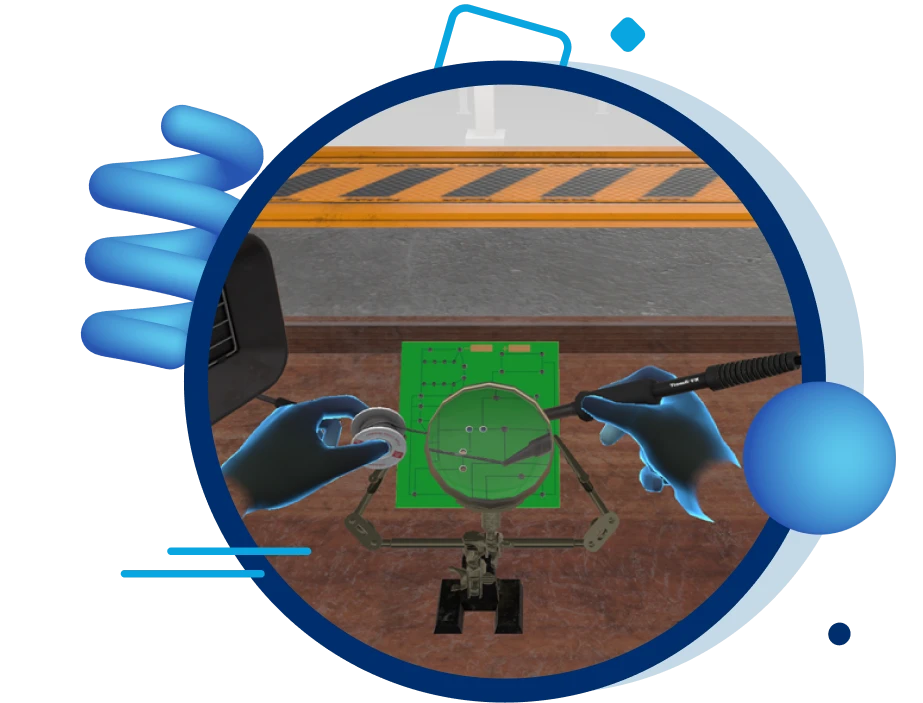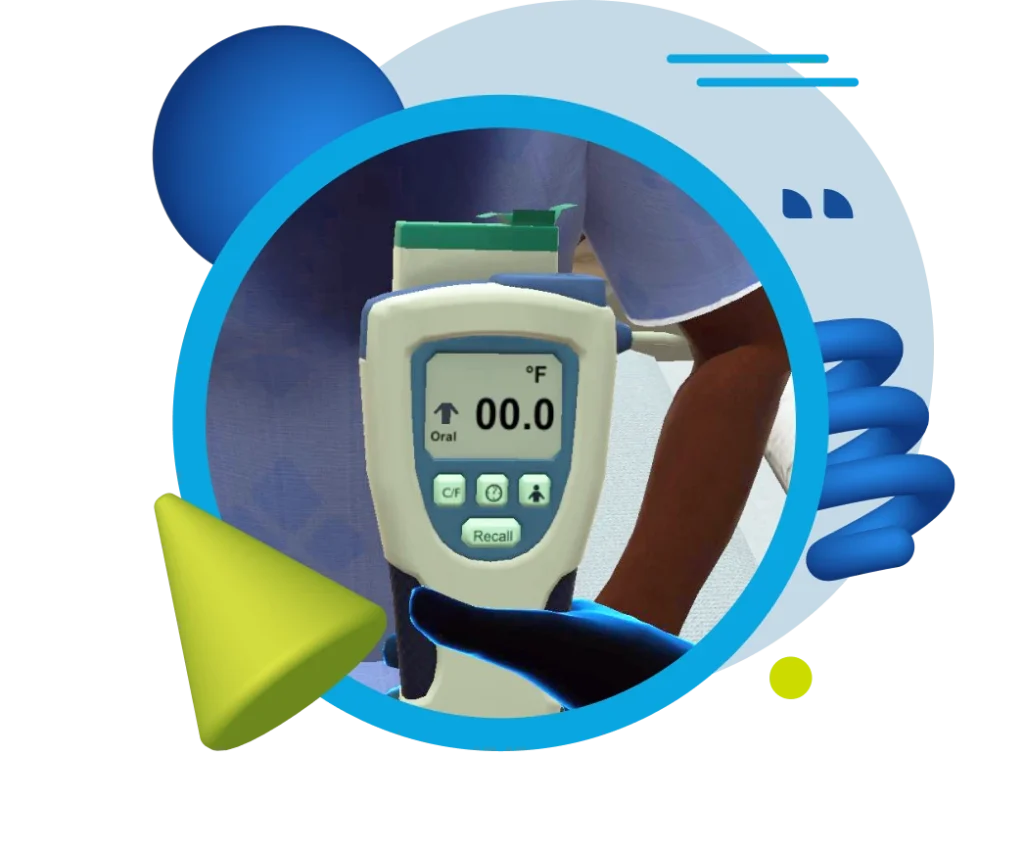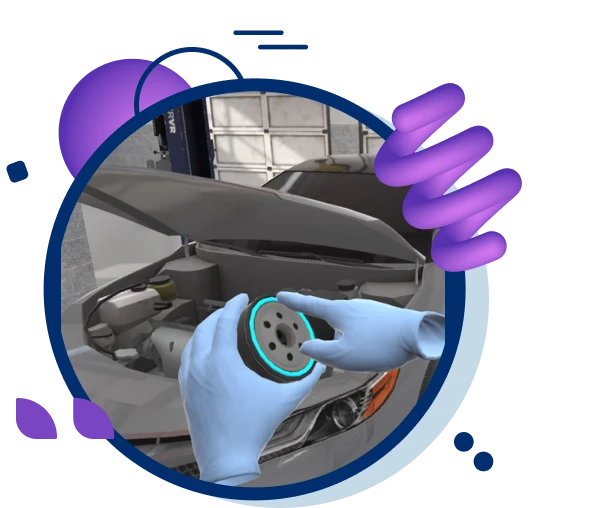It’s never too early to start thinking about your future career. The educators at Union County Public Schools (UCPS) in North Carolina wanted to present their students with more career exploration and training opportunities, earlier.
UCPS incorporated Transfr alongside other career readiness programs, with the support of dedicated career development coordinators, giving students exposure to a wider array of different careers, better gauge their interest in the skilled trades, and guide them towards classes offered by the district that can help them earn industry-recognized credentials.
The program was so successful in the 2021-2022 school year that UCPS hired another career development coordinator and doubled their number of Transfr headsets from 10 to 20!
| Stat Box | |
|---|---|
| Date started: July 2020 | Simulations completed: 1,700+ |
| Number served: 1,370+ | Main use case: Career exploration |
| Groups served: Middle and high school CTE students | Industry focus: Manufacturing, construction, automotive |

I first heard about Transfr at a conference and started doing my research. Specifically, we were looking for portability — we wanted to bring the headsets to multiple different school locations, plus use them for special events like summer camps. Transfr was perfect for that.”
Brian Davis
Director of Career Readiness at UCPS
Middle school is a time of transition and possibility. Students struggle to find their place in social groups and in their academic journeys, but using this time of potential and imagination to think about career pathways is vital as well. How schools engage students can make all the difference in whether a career preparation program succeeds or not.
For Brian Davis, Director of Career Readiness at UCPS, increasing access to career exploration activities was top of mind. UCPS already had programs in place to facilitate conversations with students and lead them towards classes and other training programs down the line that could help them secure a job, but delivering exciting, inspiring experiences at scale was a challenge — that’s where Transfr was able to help.
The decision to augment human instructors with VR technology isn’t always an easy one, but for Brian, it was exciting. He says Union School District’s choice to integrate Transfr into their programs was driven by the possibilities that it could open up for students and educators:
“I first heard about Transfr at a conference and started doing my research,” Brian says. “Specifically, we were looking for portability — we wanted to bring the headsets to multiple different school locations, plus use them for special events like summer camps. Transfr was perfect for that.”
Once Transfr was deployed, it really took off with students and instructors. Transfr’s portability allows the two career readiness instructors to bring VR Career exploration headsets to various district locations, driving up student interest in career pathways.
“The kids were thrilled,” says Elizabeth Higginbotham, Career Development Coordinator. “They would see me come in with my cart and their eyes would light up, especially in the alternative school that I’m at.”
Student adoption has been awesome, with 1,374 students completing 1,737 career exploration simulations in the 2021-2022 school year. This success has driven the district to double its headset count to 20 for the 2022-2023 school year, opting for All-Access headsets, which will allow students to go from career exploration to skills training in Transfr’s Virtual Training Facility.
In middle school, college (and even high school) can seem a million years away, so making career exploration activities fun and exciting is key to the success of Union School District’s efforts.
“When I first heard about Transfer VR, I was very intrigued with bringing VR into the middle school.” Career Development Coordinator Diana Ollis. “Some of the kids had already been using it and my own children had been looking at them and using them. So I thought, how cool would it be to bring current things into the classroom?”
New technology like VR can be instrumental in driving student interest in new fields, for instance, the skilled trades. Not every student will go to college — and countless careers in the skilled trades offer great pay and meaningful development (with increased earning power) over time. The team at Union wants students to be aware of all their opportunities, and VR career exploration is certainly helping them do that.
“Transfr allows students to explore lots of different occupations to get them to think outside of the box,” says Diana. “Students need to realize that there are lots of opportunities out there, not just what you see in the community at home.”
Elizabeth adds: “All of the CTE students I’ve worked with have absolutely loved Transfr. You see the excitement in their faces. It is the highlight of their day. They talk about going home and telling their parents all about it. So it really extends outside of the classroom and makes them excited to learn.”
Students aren’t the only ones who are excited about using VR — Brian explains how the efficient training process and Transfr’s ease of use won over staff members who might have initially been skeptical:
“It’s so easy to use Transfr and it was really easy to get the staff on board. Something you run into when implementing any new product is that if it’s too hard for instructors to learn how to use, it’s going right up on the shelf. But once instructors see how easy it is to use the headsets, they integrate them into programming easily. The training needed to use Transfr is extremely minimal. That’s huge — it can’t take teachers hours and hours to understand new tech.”
Virtual reality isn’t just futuristic tech — it has the ability to make students and educators think about the future in new ways. For UCPS, initial success with Transfr led them to double down, expanding their program with additional headsets for the new school year and looking for more ways to leverage this horizon-expanding technology.
Brian says that the addition of all-access headsets, which include virtual skills training modules and career exploration software, represents a commitment to increasing the amount and types of training done using VR. It also supercharged the district’s CTE program with the ability to train more students without buying expensive equipment or costly consumables like wood, wire, and metal. Brian also hopes to integrate Transfr simulations within credentialed programs that the school already offers.
UCPS was recognized as the number one district in NC for student credentials earned in the 2020-2021 school year with over 9000 credentials earned. In the 2021-2022 school year that number grew to over 11,000 credentials earned in CTE classes.
Whatever role Transfr simulations play in students’ classroom-to-career pathways, VR has a powerful ability to drive interest in new careers and keep students engaged. Elizabeth has this to say about students exploring new roles with VR:
“Transfr gives students a chance to really test out new jobs and do something hands-on and learn a little bit more about the job, rather than just reading, writing, or hearing about it. They’re actually getting to do and test it out. The Transfr experience can encourage kids to take their interest a step further. It creates excitement in learning.”



VR Career Exploration Reveals New Career Paths for Youths
VR Career Exploration Reveals New Career Paths for Youths